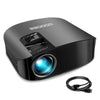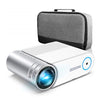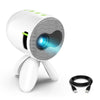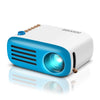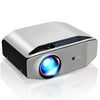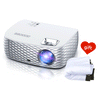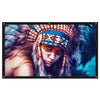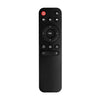
How does a projector work?
Entertainment and presentations have evolved over the years due to the invention of what is now known as a projector. Projectors (also called image projectors) are optical devices that project still or moving images onto a surface commonly called a projector screen. It uses modern technology, lenses, color wheels and several chips to beam light unto the projector screen so that you can enjoy your movies, or make your presentations in high quality and style.
The concept of projectors goes back in time to when people made shadow plays known as shadowgraphs, which later evolved into shadow puppetry and was popular in Asia. Projectors have a link to cameras which paved the way for them. They evolved into slide projectors and overhead projectors which were later replaced by the current most common type of projector, the digital video projector.
Projectors keep changing, and with these changes come more complex mechanics as per how they work. In the past, the technology behind a projector would probably have looked like magic, but today we understand better how it works. So, if you want to know how a projector works, keep reading.
The Technology behind a Projector
Today, projectors have been classified into various forms based on size and functionality, but majorly, projectors can be classified based on their display technologies which are majorly divided into three types: LCD projectors (liquid crystal display), DLP projectors (digital light processing) and LCOS projectors (liquid crystal on silicon).
In LCD projectors, there are usually three panels. An LCD panel displays an image which divides the colors using of several dichroic prisms. Light is then passed through another LCD panel that recombines the colors by separating them in spectra. Both panels then reflect different colors onto the last panel which reflects the light in accordance to the amount of electric current. Lastly, the dichroic mirror converts all the colors reflected into a full image which is then magnified by a lens and projected onto a projector screen. A good example of a first-rate LCD projector is the Goodee YG601 LCD home theater 1080 supported projector.
DLP projectors rely on what is called a digital micro mirror device chip (DMD). This technology is quite powerful as it combines millions of small mirrors on a single chip to display images. The DMD chip reflects a color on each mirror using a mosaic effect which then creates a complete image.
Lastly, the LCOS projector is a hybrid because it uses both the DLP projector and LCD projector technology. This type of projector is very new and quite complex. Since it uses a combination of LCD and DLP projector technologies, it has been said to have superior image projection.
What is Projector “Throw”?
Projector throw is the distance the light must travel to make a certain picture size. The throw distance can be categorized into long throw, ultra-short throw and short throw.
Many good projectors, like the Goodee YG620 LED video projector, use lenses that have long throw capacity, with a throw distance of 4.9 to 18 feet. Short throw lenses are usually larger, thereby creating a shallow depth which reduces the throw distance. Ultra-short throw projectors have very short throw distance and are quite expensive.
The knowledge of how a projector works helps you appreciate projectors better, and this understanding will help you when you’re deciding what kind of projector to get. To get started on your journey with projectors, check out our store to get the best in projector affordability and quality.


